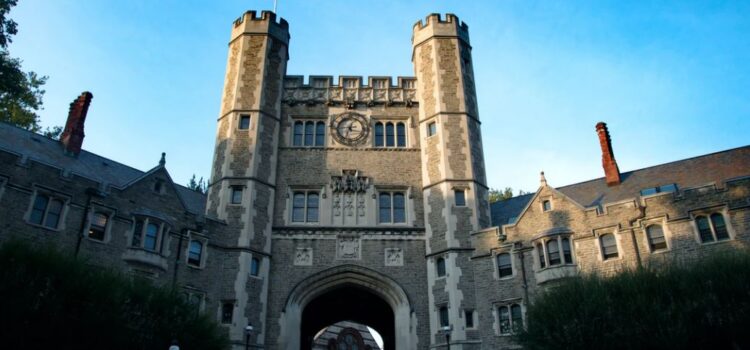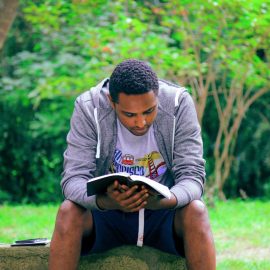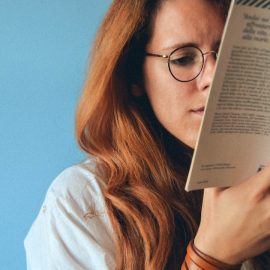

This article is an excerpt from the Shortform book guide to "Becoming" by Michelle Obama. Shortform has the world's best summaries and analyses of books you should be reading.
Like this article? Sign up for a free trial here .
What kind of discrimination did Michelle Obama face at Princeton University? How did her brother play a part in her college experience?
When Michelle Obama entered Princeton, less than 9% of students in her class were Black and most were male. She even had an experience where her roommate moved out because her mother didn’t want her rooming with a Black girl. Despite all of that, Michelle thrived.
Keep reading to learn more about Michelle Obama’s Princeton years.
Michelle Obama’s Princeton Years (1981-1985)
These chapters of Becoming focus on Michelle Obama in Princeton University and her experience as a Black woman in classrooms full of white men. These years are critical to Michelle’s “becoming”: As her skills and capabilities develop, she learns to believe in herself. She sees that even in the most daunting situations in college or in her work-study job, she can rise to meet the challenge.
A New Start at Princeton
In 1981, 17-year-old Michelle went off to Princeton, leaving behind everything she loved in Chicago, including her boyfriend of the last year. Although she knew he was a great guy and she loved him, she also knew he didn’t fit into her new life.
Being in the Minority
At Princeton, Michelle experienced being in the minority for the first time. Her first few weeks at Princeton were an orientation period just for minority students, so she didn’t immediately notice much disparity between herself and her peers. Princeton admitted some of the students to fill affirmative action quotas; others were student-athletes in the top tier of their sports. Some incoming freshmen were much like her—exceptional achievers whose parents had scrimped and saved to send them to an Ivy League school.
But as soon as the entire student body showed up for the semester’s official start, she saw the majority were white men. Men outnumbered women two to one. Black students made up less than 9% of Michelle’s class. Many students came from privileged or wealthy backgrounds—some even arrived on campus in their parents’ limousines.
Michelle had never been part of a mostly white community, and she felt that her skin color made her stand out. It required extra effort to act comfortable and confident when she was the only nonwhite person sitting in a classroom, joining an intramural team, or trying out for a part in a play.
Discrimination at Princeton
She saw some students of color experience more blatant discrimination. In one instance, a Black female student was called to the dean’s office because her white roommate had complained that she had “big Black guys” in their room to celebrate her birthday.
Other instances of discrimination were invisible to Michelle. Midway through her freshman year, Michelle’s white roommate moved out of their room, but Michelle never found out why until 25 years later. As Michelle and Barack rose to political prominence, the roommate was featured on the news. She told this account of what happened: Her white mother had been horrified to learn that one of her daughter’s roommates (Michelle) was Black, and she demanded that the college separate them. Princeton moved the white girl into another room, but kept the entire incident under wraps.
Thriving at Princeton
Given the white-male-dominated milieu at Princeton, Michelle felt compelled to work even harder to overcome racial stereotypes. She quickly learned not to feel intimidated by the white males who spoke up most often in class. She realized they weren’t smarter than she was; they were just more confident.
She focused all her efforts on excelling in her classes, following a strict, unrelenting study schedule every day. While majoring in sociology and African-American studies, she gained a reputation as the kind of high-achiever who spent evenings in the library color-coding her extremely organized class notes. She constantly reviewed her progress, counted her victories, and reassessed her goals. She never wavered from her goals of scoring higher and achieving more.
Meanwhile, Michelle also came to appreciate the luxuries that Princeton afforded—vast libraries, beautiful buildings, meticulously maintained grounds, a wealth of delicious food in the dining halls, and the chance to play sports like squash and lacrosse that were unheard of at Michelle’s inner-city high school.
Michelle also enjoyed the advantages of being Craig’s little sister. Craig had established himself on campus by playing on Princeton’s varsity basketball team, and he was able to introduce her to his broad array of friends.
One of Craig’s friends was Kevin, a Princeton football player who became Michelle’s boyfriend. She loved being with Kevin because he was lighthearted, fun, and much less achievement-oriented than she was. He planned to attend medical school, but in his senior year, he made a surprising switch: He decided to audition for the job of the Cleveland Browns’ mascot—a guy dressed up in an animal costume.
Michelle judged Kevin harshly for this. She couldn’t understand why Kevin wasn’t as driven as she was.
Befriending Suzanne
Craig also introduced Michelle to Suzanne Alele, a premed student who quickly became one of Michelle’s best friends despite their polar-opposite personalities. While Michelle was organized and meticulous, Suzanne was messy and carefree. Michelle was a planner, and Suzanne made decisions on the spur of the moment. Still, the two became inseparable and eventually shared an apartment together.
Michelle reflects that later in life when she lived with Barack—a man who never folded his clothes and left piles of belongings in every room—she was able to coexist peacefully with him because of her experiences living with Suzanne.

———End of Preview———
Like what you just read? Read the rest of the world's best book summary and analysis of Michelle Obama's "Becoming" at Shortform .
Here's what you'll find in our full Becoming summary :
- How Michelle Obama went from the South Side of Chicago to the White House
- Why much of her success came from her being determined from a young age
- How Michelle Obama continues to push herself and discover new opportunities






